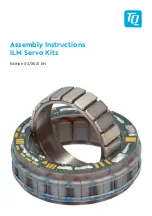
5-2
Reflected Wave
(CIV) for the air void is reached, ozone is produced. Ozone attacks the PVC
insulation leading to a breakdown in cable insulation.
Asymmetrical construction of the insulation has also been observed for
some manufacturers of PVC wire. A wire with a 15 mil specification was
observed to have an insulation thickness of 10 mil at some points. The
smaller the insulation thickness, the less voltage the wire can withstand.
THHN jacket material has a relatively brittle nylon that lends itself to
damage (i.e. nicks and cuts) when pulled through conduit on long wire runs.
This issue is of even greater concern when the wire is being pulled through
multiple 90º bends in the conduit. These nicks may be a starting point for
CIV leading to insulation degradation.
During operation, the conductor heats up and a “coldflow” condition may
occur with PVC insulation at points where the unsupported weight of the
wire may stretch the insulation. This has been observed at 90º bends where
wire is dropped down to equipment from an above wireway. This
“coldflow” condition produces thin spots in the insulation which lowers the
cable's voltage withstand capability.
Refer to NEC Article 100 for definitions of Damp, Dry and Wet locations.
The U.S. NEC permits the use of heat-resistant thermoplastic wire in both
dry and damp applications (Table 310-13). However, PVC insulation
material is more susceptible to absorbing moisture than XLPE (Cross
Linked polyethylene) insulation material (XHHN-2) identified for use in
wet locations. Because the PVC insulating material absorbs moisture, the
Corona Inception Voltage insulation capability of the “damp” or “wet”
THHN was found to be less than ½ of the same wire when “dry.” For this
reason, certain industries where water is prevalent in the environment have
refrained from using THHN wire with IGBT drives. Rockwell Automation
strongly suggests the use of XLPE insulation for wet areas.
Length Restrictions For
Motor Protection
To protect the motor from reflected waves, limit the length of the motor
cables from the drive to the motor. Each drive's user manual lists the lead
length limitations based on drive size and the quality of the insulation
system in the chosen motor.
If the distance between drive and motor must exceed these limits, contact
the local office or factory for analysis and advice. Refer to
complete tables.
Содержание Allen-Bradley 1305-AA02A
Страница 1: ...Installation Instructions Wiring and Grounding Guidelines for Pulse Width Modulated PWM AC Drives ...
Страница 4: ...ii Summary of Changes Notes ...
Страница 40: ...2 18 Power Distribution Notes ...
Страница 48: ...3 8 Grounding Notes ...
Страница 68: ...4 20 Practices Notes ...
Страница 78: ...6 8 Electromagnetic Interference Notes ...
Страница 94: ...Glossary 4 UL Underwriters Laboratories ...
Страница 100: ...Index 6 ...
Страница 101: ......
















































